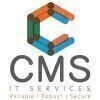
i
Infovision
Filter interviews by
Infovision Interview Questions and Answers
32 Interview questions
Use SQL MERGE to efficiently insert or update records based on incoming data.
MERGE statement combines INSERT and UPDATE operations in one command.
Example: MERGE INTO target_table USING source_table ON target_table.id = source_table.id.
When a match is found, use UPDATE to modify existing records.
When no match is found, use INSERT to add new records.
Example syntax: WHEN MATCHED THEN UPDATE SET target_table.col1 = so...
To perform a full load in SSIS, you can use the Data Flow Task with a source and destination component.
Create a Data Flow Task in the Control Flow tab of the SSIS package.
Add a source component to extract data from the source system.
Add a destination component to load data into the destination system.
Map the columns from the source to the destination.
Run the package to execute the full load.
Identifying long running queries in SQL
Monitor query execution times using tools like SQL Server Profiler or Performance Monitor
Check system views like sys.dm_exec_requests or sys.dm_exec_query_stats for query durations
Use query hints like OPTION (RECOMPILE) to force recompilation of queries for better performance
Use a single activity with dynamic parameterization and loops to copy data.
Use a loop to iterate through the data source and destination locations.
Parameterize the source and destination locations to dynamically copy data.
Utilize a scripting language like Python or PowerShell to implement the logic.
Example: Use a Python script with a loop to copy files from one folder to another.
Example: Use PowerShell script with...
Use Azure Data Factory to transfer files >10MB from FTP to ADLS efficiently.
1. Create a linked service for FTP in ADF to connect to the FTP server.
2. Create a linked service for ADLS to connect to your Azure Data Lake Storage.
3. Use a Copy Data activity in a pipeline to transfer files.
4. Set up a filter in the Copy Data activity to only select files larger than 10MB.
5. Schedule the pipeline to run at desired in...
Snowflake is a cloud-based data warehousing platform that allows for easy and scalable data storage and analysis.
Snowflake is a fully managed service that works on a pay-as-you-go model.
It separates storage and compute resources, allowing for better scalability and cost-effectiveness.
Snowflake supports SQL queries and has built-in support for semi-structured data like JSON and XML.
It provides features like automat...
Window functions in SQL are used to perform calculations across a set of table rows related to the current row.
Window functions are used to calculate values based on a set of rows related to the current row.
They allow for ranking, aggregation, and other calculations within a specific window of rows.
Common window functions include ROW_NUMBER(), RANK(), DENSE_RANK(), and SUM() OVER().
Delete removes rows one by one and can be rolled back, while Truncate removes all rows at once and cannot be rolled back.
Delete is a DML command, while Truncate is a DDL command.
Delete can be rolled back using a transaction, while Truncate cannot be rolled back.
Delete fires triggers on each row deletion, while Truncate does not fire triggers.
Delete is slower as it removes rows one by one, while Truncate is faster ...
Fact tables store quantitative data for analysis, while dimension tables store descriptive attributes related to facts.
Fact tables contain measurable, quantitative data (e.g., sales revenue, order quantity).
Dimension tables contain descriptive attributes (e.g., product name, customer details).
Fact tables often have foreign keys linking to dimension tables.
Example: A sales fact table might include total sales, whil...
Steps for an ABAP person in upgrade
Analyze the current system and identify the areas that need to be upgraded
Check for compatibility issues with the new version
Create a backup of the current system
Install the new version of SAP and perform necessary configurations
Test the upgraded system and fix any issues
Train the end-users on the new features and functionalities
Infovision Interview Experiences
36 interviews found
I appeared for an interview in May 2025, where I was asked the following questions.
- Q1. Architecture of the .NET Framework.
- Ans.
The .NET Framework is a software development platform for building and running applications on Windows.
.NET Framework consists of the Common Language Runtime (CLR) and the .NET Framework Class Library (FCL).
CLR manages memory, handles exceptions, and provides security features for applications.
FCL provides a vast collection of reusable classes, such as System.Collections for data structures.
Supports multiple programmin...
- Q2. What is MVC
Interview Preparation Tips
(1 Question)
- Q1. How do you create a REST API using Spring Boot?
- Ans.
Creating a REST API in Spring Boot involves setting up a project, defining models, controllers, and services, and configuring endpoints.
1. Set up a Spring Boot project using Spring Initializr or your IDE.
2. Add dependencies: 'spring-boot-starter-web' for RESTful services.
3. Create a model class (e.g., 'User') with fields and annotations.
4. Implement a repository interface (e.g., 'UserRepository') extending JpaRepositor...
(1 Question)
- Q1. Can you explain your project?
- Ans.
Developed a web-based application for managing project tasks and team collaboration, enhancing productivity and communication.
Utilized React for the front-end, providing a responsive user interface.
Implemented a Node.js backend with Express for handling API requests.
Integrated MongoDB for data storage, allowing for efficient task management.
Incorporated user authentication using JWT for secure access.
Deployed the appli...
I appeared for an interview in Mar 2025, where I was asked the following questions.
- Q1. Tell me about ur self? what is VAPT? what is sql injection? how to test the application? what is SSRF? what is CSRF?
- Ans.
VAPT involves identifying vulnerabilities in web applications through testing methods like SQL injection, SSRF, and CSRF.
VAPT: Vulnerability Assessment and Penetration Testing, a process to identify and exploit vulnerabilities in applications.
SQL Injection: A code injection technique where an attacker inserts malicious SQL queries to manipulate databases. Example: ' OR '1'='1'.
Testing Applications: Use tools like Burp ...
- Q2. How to test the mobile application? how to test API related question? JWT token?
Interview Preparation Tips
I appeared for an interview in Apr 2025, where I was asked the following questions.
- Q1. Tell me about yourself
- Q2. What would be your ambition
I appeared for an interview in Mar 2025, where I was asked the following questions.
- Q1. How much time to travelling you
- Q2. Ready to relocated
Interview Preparation Tips
I appeared for an interview in Jan 2024.
(15 Questions)
- Q1. What are window functions in SQL
- Ans.
Window functions in SQL are used to perform calculations across a set of table rows related to the current row.
Window functions are used to calculate values based on a set of rows related to the current row.
They allow for ranking, aggregation, and other calculations within a specific window of rows.
Common window functions include ROW_NUMBER(), RANK(), DENSE_RANK(), and SUM() OVER().
- Q2. ETL - How to do full load in SSIS, mention the steps
- Ans.
To perform a full load in SSIS, you can use the Data Flow Task with a source and destination component.
Create a Data Flow Task in the Control Flow tab of the SSIS package.
Add a source component to extract data from the source system.
Add a destination component to load data into the destination system.
Map the columns from the source to the destination.
Run the package to execute the full load.
- Q3. ETL- how to do the incremental load in ADF and in SSIS
- Ans.
Incremental load in ADF and SSIS involves identifying new or updated data and loading only those changes.
In ADF, use watermark columns to track the last loaded value and filter data based on this value
In SSIS, use CDC (Change Data Capture) components or custom scripts to identify new or updated data
Both ADF and SSIS support incremental loading by comparing source and target data to determine changes
- Q4. Linked Service Vs Dataset
- Ans.
Linked Service connects to external data sources, while Dataset represents the data within the data store.
Linked Service is used to connect to external data sources like databases, APIs, and file systems.
Dataset represents the data within the data store and can be used for data processing and analysis.
Linked Service defines the connection information and credentials needed to access external data sources.
Dataset define...
- Q5. What is IR - integration Runtime? what are the types of IR
- Ans.
Integration Runtime (IR) is a compute infrastructure that provides data integration capabilities across different network environments.
IR is used in Azure Data Factory to provide data integration capabilities
There are three types of IR: Azure, Self-hosted, and Azure-SSIS
Azure IR is fully managed by Microsoft and is used for data movement in the cloud
Self-hosted IR allows data movement between on-premises and cloud data...
- Q6. Scenario: In ADF, if we have files in FTP folder, how to get it to ADLS where the file size > 10mb.
- Ans.
Use Azure Data Factory to transfer files >10MB from FTP to ADLS efficiently.
1. Create a linked service for FTP in ADF to connect to the FTP server.
2. Create a linked service for ADLS to connect to your Azure Data Lake Storage.
3. Use a Copy Data activity in a pipeline to transfer files.
4. Set up a filter in the Copy Data activity to only select files larger than 10MB.
5. Schedule the pipeline to run at desired interva...
- Q7. How to copy data without using multiple activities. Dynamically using loops/ parameterization.
- Ans.
Use a single activity with dynamic parameterization and loops to copy data.
Use a loop to iterate through the data source and destination locations.
Parameterize the source and destination locations to dynamically copy data.
Utilize a scripting language like Python or PowerShell to implement the logic.
Example: Use a Python script with a loop to copy files from one folder to another.
Example: Use PowerShell script with dyna...
- Q8. Datawarehouse - What is a Fact and Dimention table
- Ans.
Fact tables store quantitative data for analysis, while dimension tables store descriptive attributes related to facts.
Fact tables contain measurable, quantitative data (e.g., sales revenue, order quantity).
Dimension tables contain descriptive attributes (e.g., product name, customer details).
Fact tables often have foreign keys linking to dimension tables.
Example: A sales fact table might include total sales, while a p...
- Q9. What is snowflake?
- Ans.
Snowflake is a cloud-based data warehousing platform that allows for easy and scalable data storage and analysis.
Snowflake is a fully managed service that works on a pay-as-you-go model.
It separates storage and compute resources, allowing for better scalability and cost-effectiveness.
Snowflake supports SQL queries and has built-in support for semi-structured data like JSON and XML.
It provides features like automatic sc...
- Q10. Agile - Scrum team size?
- Q11. SQL - (Merge) Insert / update data based on the incoming data.
- Ans.
Use SQL MERGE to efficiently insert or update records based on incoming data.
MERGE statement combines INSERT and UPDATE operations in one command.
Example: MERGE INTO target_table USING source_table ON target_table.id = source_table.id.
When a match is found, use UPDATE to modify existing records.
When no match is found, use INSERT to add new records.
Example syntax: WHEN MATCHED THEN UPDATE SET target_table.col1 = source_...
- Q12. SQL - Delete Vs Truncate ?
- Ans.
Delete removes rows one by one and can be rolled back, while Truncate removes all rows at once and cannot be rolled back.
Delete is a DML command, while Truncate is a DDL command.
Delete can be rolled back using a transaction, while Truncate cannot be rolled back.
Delete fires triggers on each row deletion, while Truncate does not fire triggers.
Delete is slower as it removes rows one by one, while Truncate is faster as it...
- Q13. How to insert non-duplicate data into target table. how many ways we can do.
- Ans.
To insert non-duplicate data into a target table, you can use methods like using a unique constraint, using a merge statement, or using a temporary table.
Use a unique constraint on the target table to prevent duplicate entries.
Use a merge statement to insert data into the target table only if it does not already exist.
Use a temporary table to store the new data, then insert only the non-duplicate records into the targe...
- Q14. SQL - how do you identify the long running queries.
- Ans.
Identifying long running queries in SQL
Monitor query execution times using tools like SQL Server Profiler or Performance Monitor
Check system views like sys.dm_exec_requests or sys.dm_exec_query_stats for query durations
Use query hints like OPTION (RECOMPILE) to force recompilation of queries for better performance
- Q15. SQL - online test given with 3 queries. One is related to Joins , second one is related to Agg functions, and 3rd is related to LAG function.
Skills evaluated in this interview
- Q1. What are different Test Case Design Techniques you ahave use=d in your project.
- Ans.
I have utilized various test case design techniques to ensure comprehensive testing and quality assurance in my projects.
Equivalence Partitioning: Dividing input data into valid and invalid partitions. For example, testing age input by using ranges like 0-17, 18-65, and 66+.
Boundary Value Analysis: Focusing on values at the edges of input ranges. For instance, testing a function that accepts numbers from 1 to 100 by ch...
- Q2. How are you prioritize your test cases for execution.
- Ans.
I prioritize test cases based on risk, business impact, and execution time to ensure efficient testing and coverage.
Risk Assessment: Focus on high-risk areas first, such as critical functionalities or recent changes. For example, if a new payment gateway is integrated, prioritize tests around payment processing.
Business Impact: Prioritize test cases that affect key business functions. For instance, if a feature directl...
I applied via LinkedIn and was interviewed in Apr 2024. There was 1 interview round.
(2 Questions)
- Q1. Types of hooks and when and why to use custom hooks
- Ans.
Hooks are functions that let you use state and other React features in functional components. Custom hooks are reusable logic functions created by developers.
Types of hooks: useState, useEffect, useContext, useReducer, useCallback, useMemo, useRef, useImperativeHandle, useLayoutEffect, useDebugValue
Custom hooks are used to extract and reuse logic from components, making code more modular and easier to maintain
Custom ho...
- Q2. Callback functions and callback hell
Skills evaluated in this interview
I applied via Approached by Company and was interviewed in Mar 2024. There were 2 interview rounds.
(2 Questions)
- Q1. Questions about margin and revenue
- Q2. Project experience
(1 Question)
- Q1. About margin and revenue technically how you are involved in the project
(2 Questions)
- Q1. Project experience
- Ans.
I have extensive project experience in developing software solutions for various industries.
Led a team in developing a customer relationship management system for a retail company
Implemented a data analytics platform for a financial institution to improve decision-making processes
Designed and deployed a mobile application for a healthcare organization to streamline patient care
Collaborated with cross-functional teams t...
- Q2. Package discussion
Top trending discussions






Infovision Interview FAQs
The duration of Infovision interview process can vary, but typically it takes about less than 2 weeks to complete.
Tell us how to improve this page.
Infovision Interviews By Designations
- Infovision Senior Technical Lead Interview Questions
- Infovision Software Engineer Interview Questions
- Infovision Senior Software Engineer Interview Questions
- Infovision Marketing Manager Interview Questions
- Infovision Marketing Executive Interview Questions
- Infovision Business Analyst Interview Questions
- Infovision Head Operations Interview Questions
- Infovision Senior Executive Interview Questions
- Show more
Interview Questions for Popular Designations
Overall Interview Experience Rating
based on 37 interview experiences
Difficulty level
Duration
Interview Questions from Similar Companies
Infovision Reviews and Ratings
based on 367 reviews
Rating in categories
|
Softwaretest Engineer
335
salaries
| ₹2.6 L/yr - ₹6.2 L/yr |
|
Senior Software Engineer
325
salaries
| ₹11.3 L/yr - ₹19.1 L/yr |
|
Software Engineer
278
salaries
| ₹3.5 L/yr - ₹8 L/yr |
|
Technical Lead
216
salaries
| ₹16.5 L/yr - ₹28 L/yr |
|
Technical Specialist
213
salaries
| ₹13.8 L/yr - ₹26.9 L/yr |

ITC Infotech

CMS IT Services

KocharTech

Xoriant
- Home >
- Interviews >
- Infovision Interview Questions















